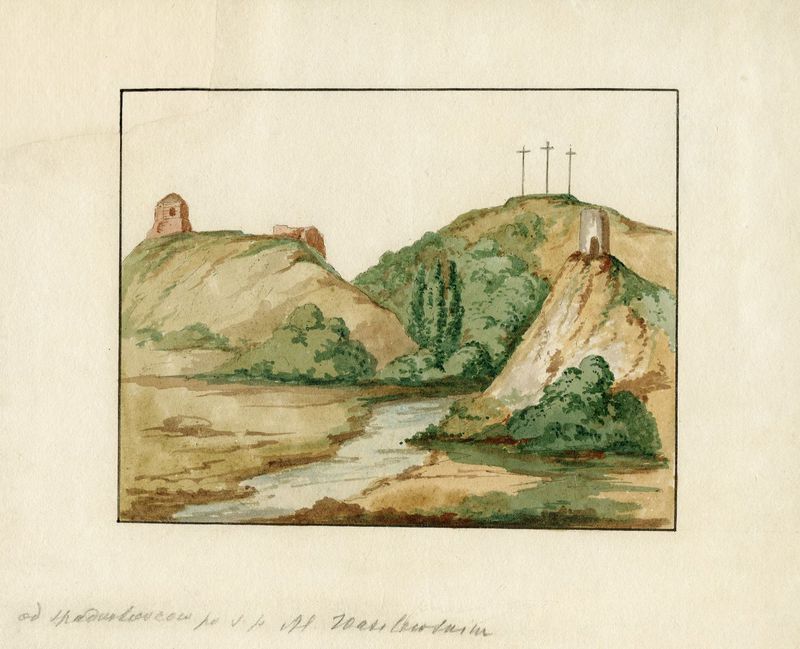The Crooked Castle and the Hill of Three Crosses

What was at the confluence of the Neris and Vilnelė rivers before the establishment of the City of Vilnius? Not only centuries-old oak trees. In fact, even the bed of the Vilnia River was in another location.
When looking at the Hill of Three Crosses, people in the 14th century saw the wooden defensive Vilnius Castle, which is also called the Crooked Castle. During the 1390 fight against the German Order, it was burnt down, and in this way part of the city’s history was lost. It is thought that the wooden defensive wall on Crooked Hill was there back at the beginning of the second millennium, and people lived in the castle and base in a wooden city in the 12-14th centuries. In fact, at the time, the landscape of the Hills Park (Kalnų parkas) was substantially different from the present-day view, and the Crooked Castle constituted a one-piece defensive complex with two other castles – the Lower and the Upper.
Later, when the Crooked Castle was no longer there, the hill continued to play an important role. One of the most well-known legends tells the story of the Franciscans, who carried out a mission in Vilnius in the 14th century. Angry pagan Lithuanians took them to the hill, tied them to crosses and pushed them in the Vilnelė River, ordering them to go back to where they came from. In Christian times, to mark this story, the first wooden crosses emerged on the hill, and now when we look at that side, we can see the white crosses designed by Antanas Vivulskis.
The 14th century: grey and legendary Vilnius
- Monument to Gediminas
- Catacombs Beneath the Cathedral
- Catacombs of the Palace of Grand Dukes of Lithuania
- Bishops’ Palace
- Pilies Street
- The Church of Saint Paraskeva and the Altar of Ragutis
- Medeinė
- St. Nicolas’ Church
- Site of the 14th Century Mounds
- Church of the Holy Spirit
- The Cathedral of the Theotokos in Vilnius
- The Crooked Castle and the Hill of Three Crosses
- Verkiai
